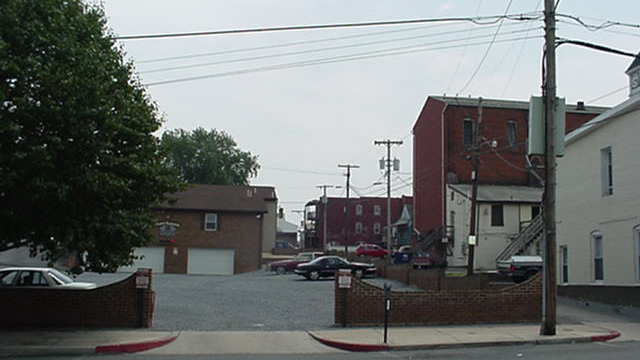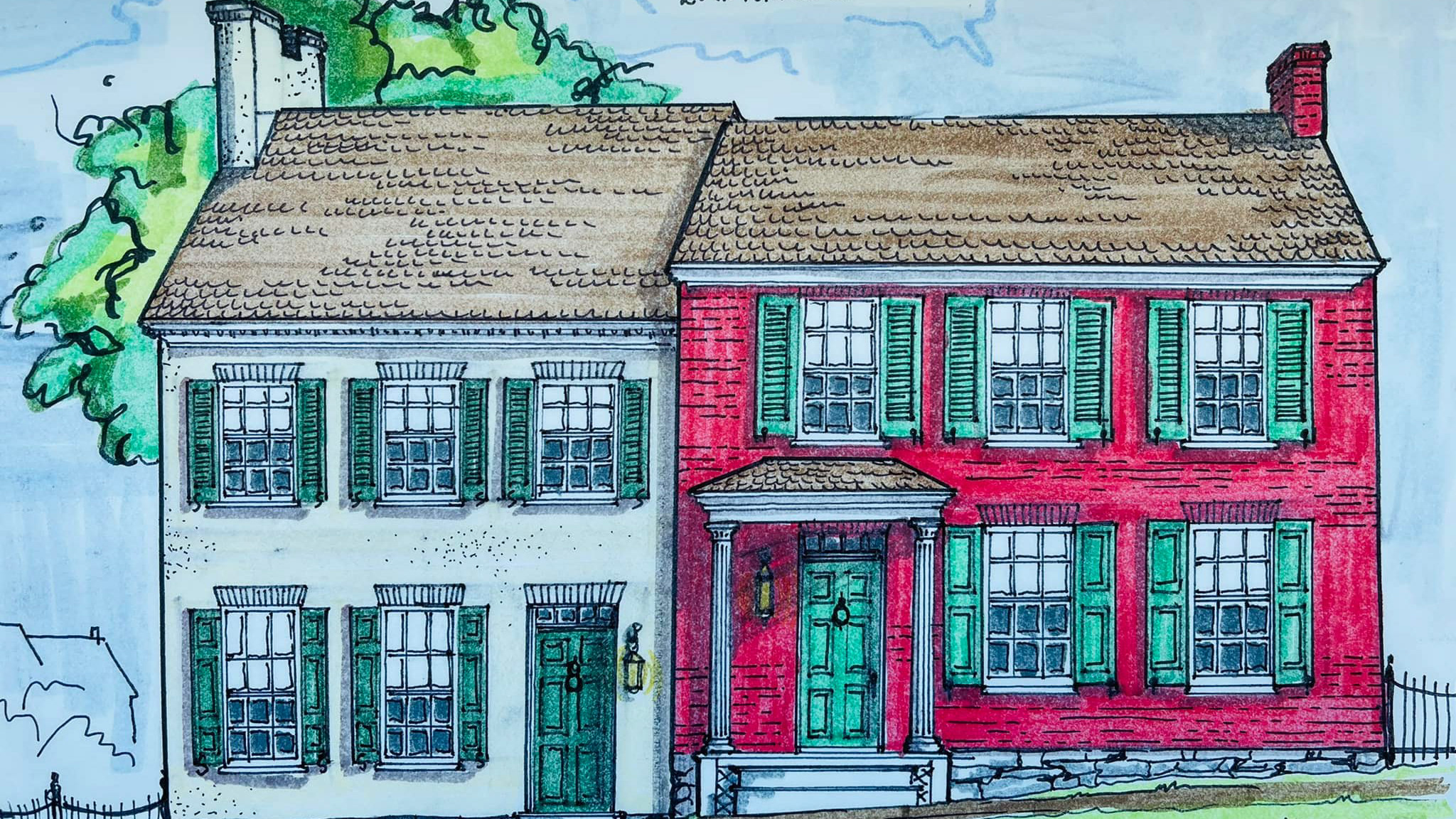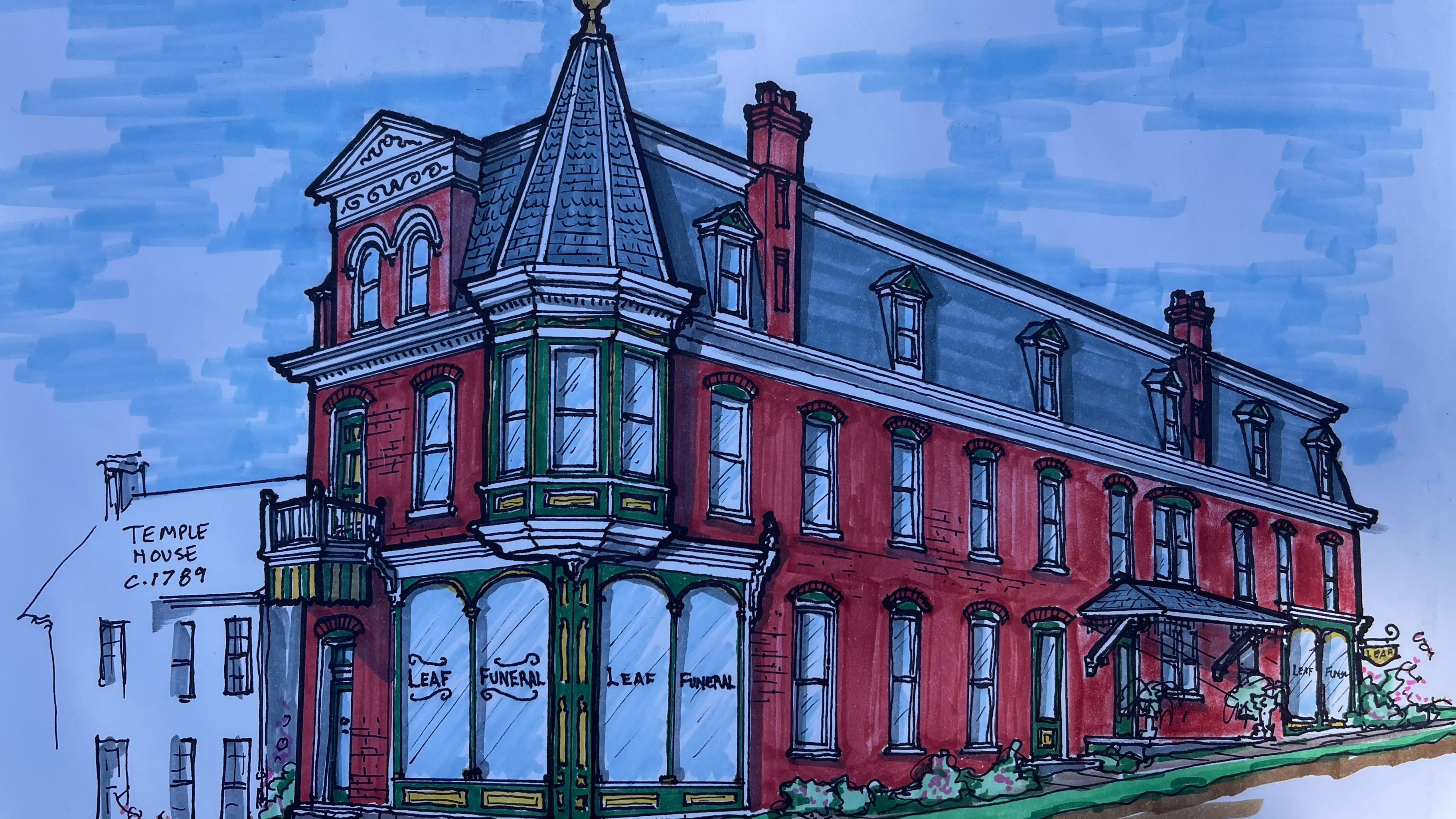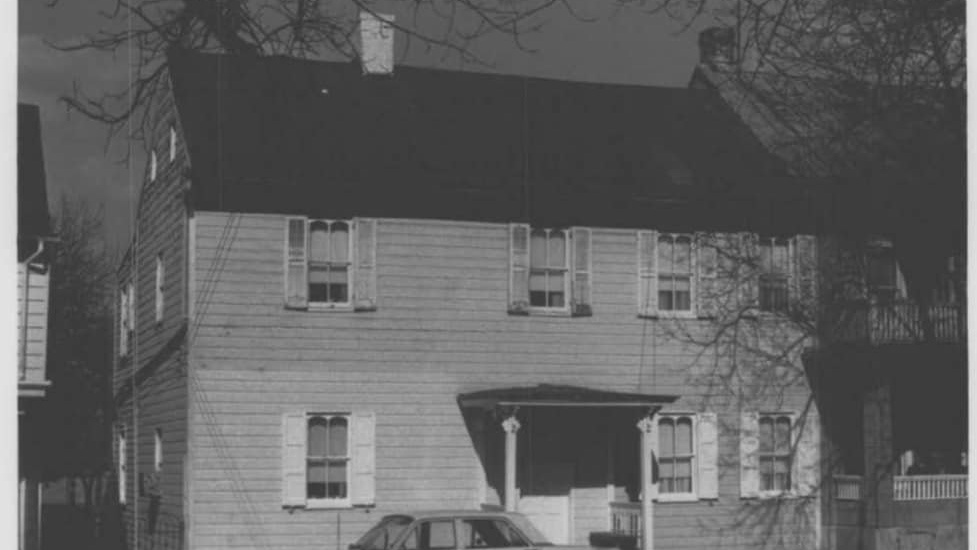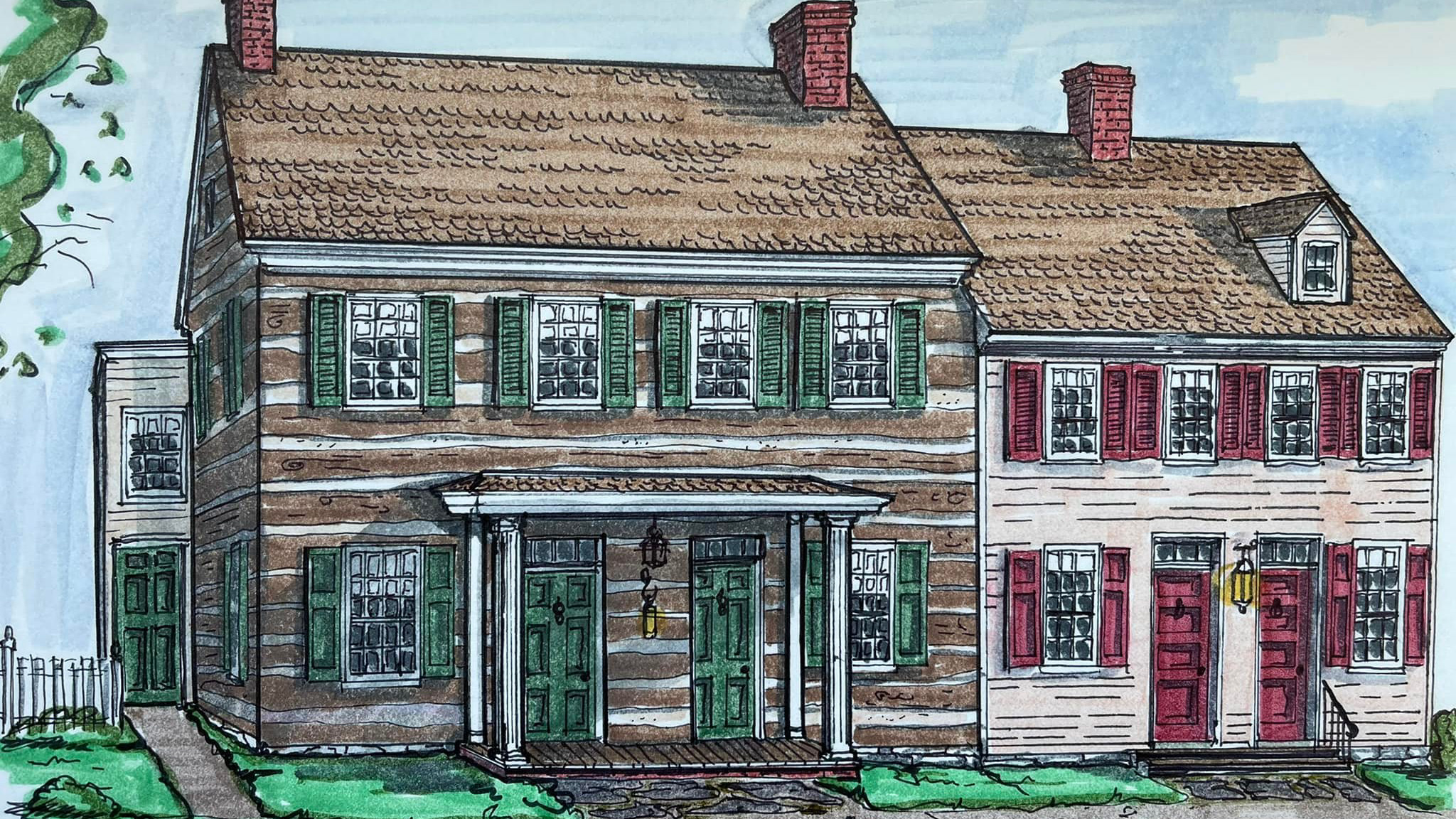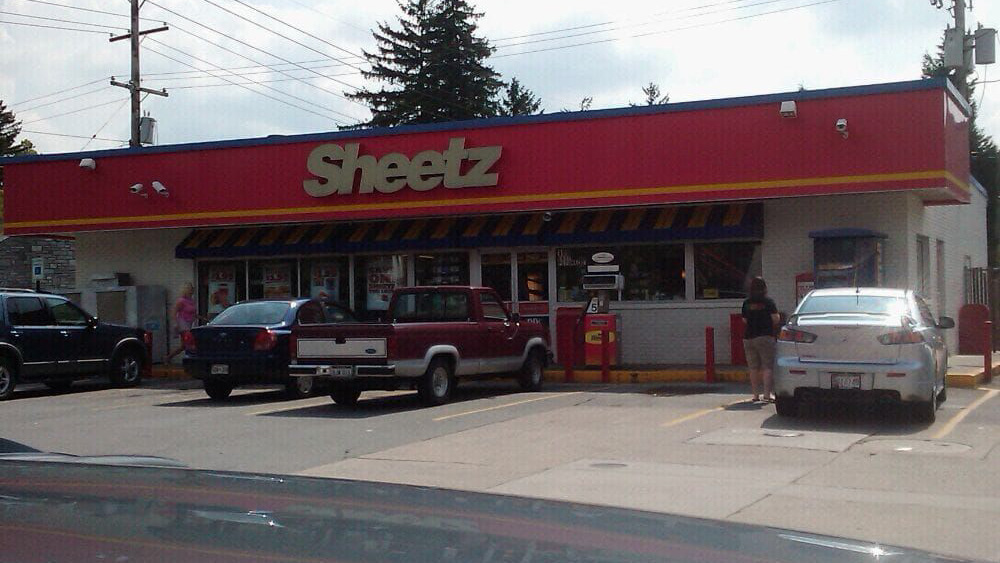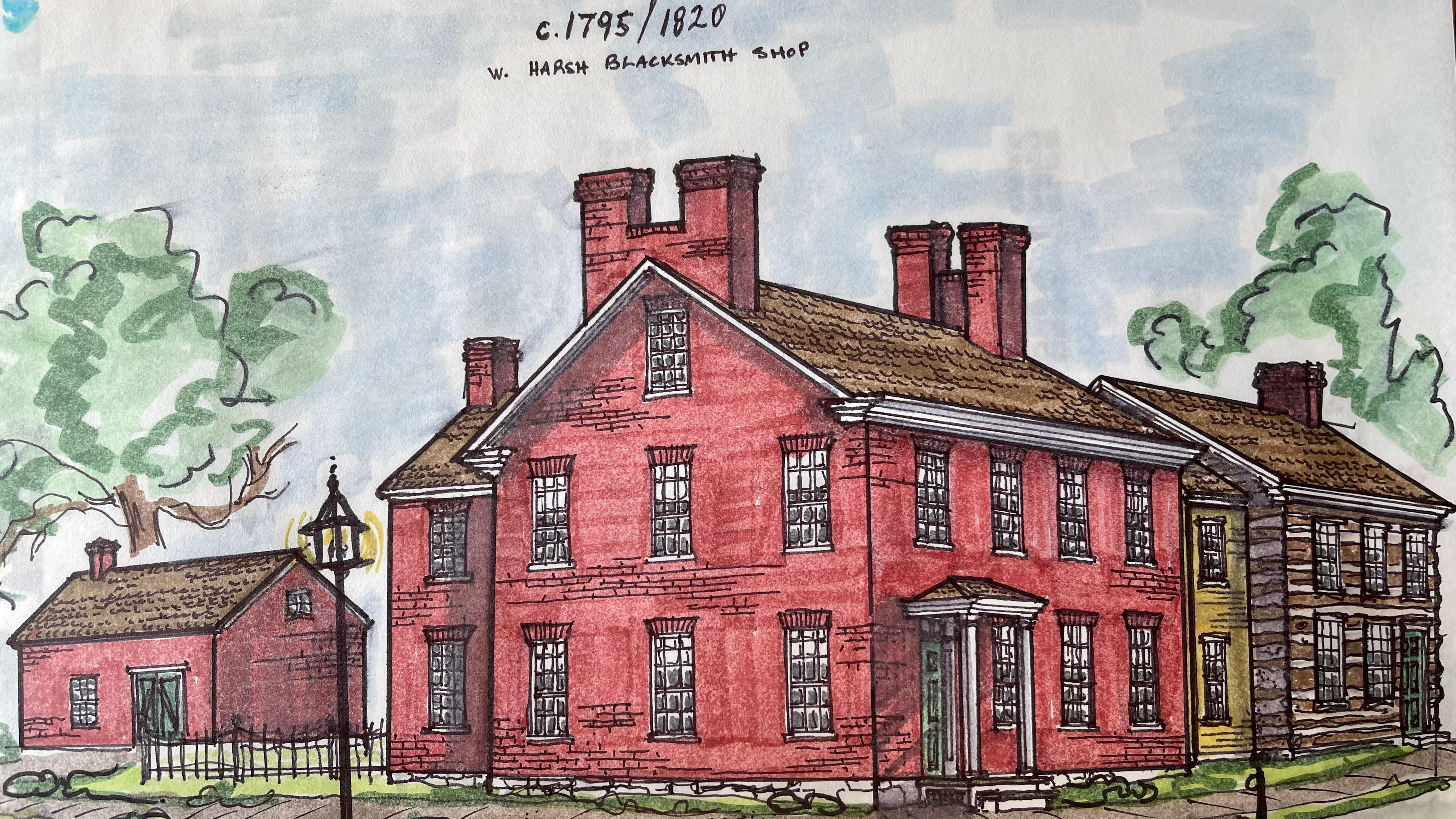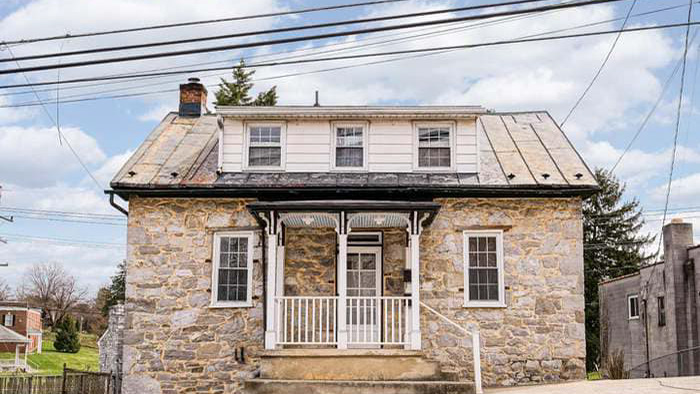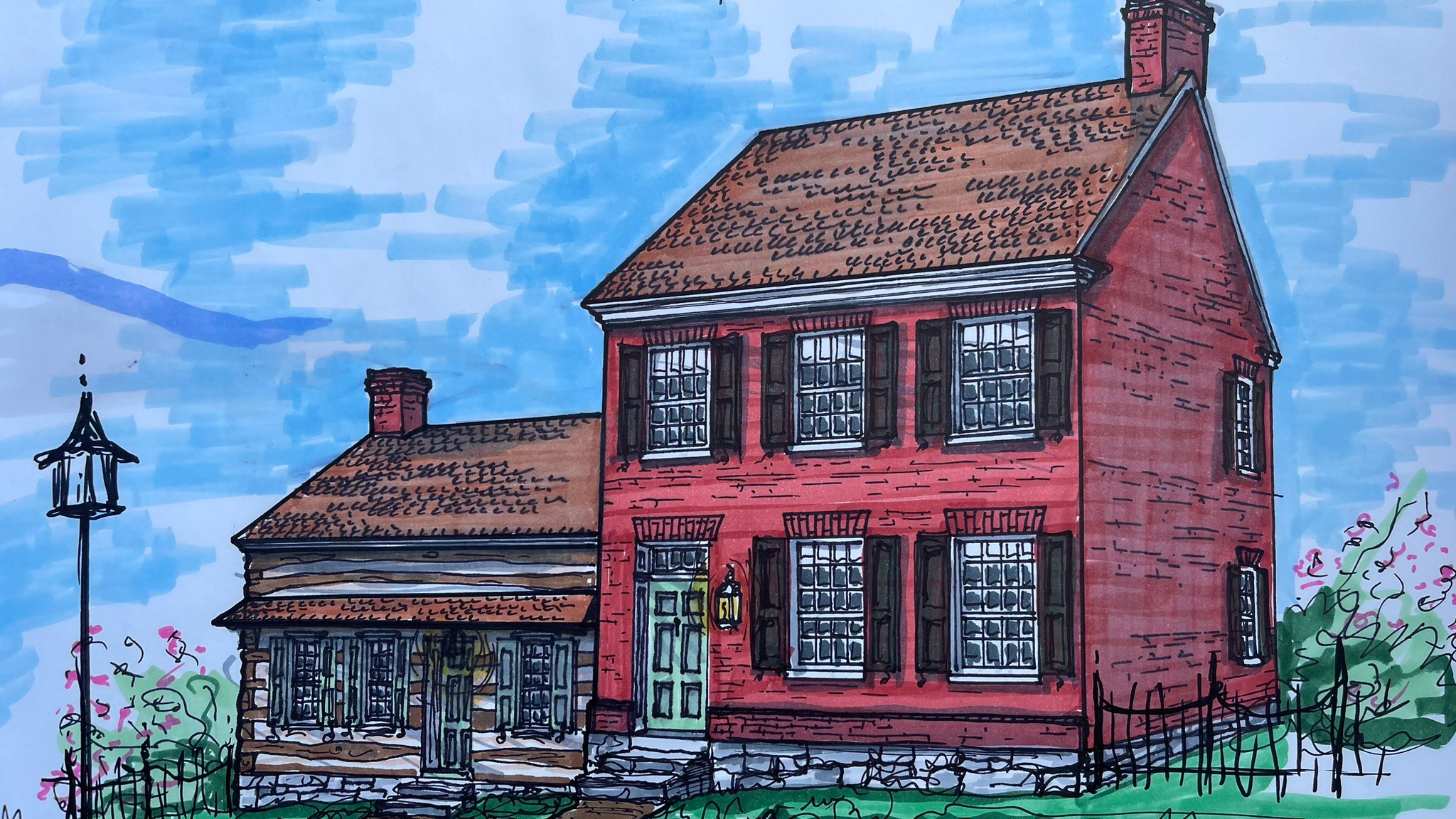Quietly sitting along East Church Street at the corner of the alley that parallels Artizan Street is an ancient log house in desperate need of attention. Sitting empty and nearing demolition by neglect, this modest house may be small, but it is a titan regarding Williamsport's proud history.
The house is three bays wide and one and a half stories high, with a shed-roofed front porch—a one-story, one-bay addition projects from the back of the home. Twentieth-century metal siding covers the entire structure. Broken and boarded windows with shattered glass litter the porch, rotten eaves, untended lawns, and crumbling foundations are risking this significant building.
Frederick Dellinger (1750-1815) was born in York, Pennsylvania. He and his wife, Anna Maria Wolff (1754-1845), had moved to the Williamsport area before 1786 when their son, Frederick Jr., was born here. Frederick Sr. served in the Revolutionary War. The Dellingers leased lot 103 from General O.H. Williams in May 1787.
This lot was among the first to be leased in town. Frederick and Anna were given until 1792 to build a log, stone, brick, or frame house, but they almost certainly immediately constructed the current log house on the western portion of the lot along the alley. The Dellingers sold the property to Samuel Ross, a relation or close friend of General Williams, in 1794 for twenty pounds. The 1794 lease no longer stipulated the need to construct a house or fence on the lot, proving the house existed.
Samuel Ross was some relation of George Ross, who built the oldest central section of Springfield Farm in about 1756. Otho and Samuel must have been close as Samuel invested in and leased numerous lots around the newly formed Williamsport. After purchasing lot 103 from Dellinger, Samuel partnered with wealthy merchant Peter Miller who owned a sawmill, a distillery near Williamsport, and a hatting business in Hagerstown.
Samuel and Peter must have built the larger two-story house on the eastern portion of the lot at the corner of Artizan and Church Street. Ross and Miller sold the property to George Deck for $580 in 1811. George Deck owned the property for a short time, selling it to Blair Morris. In 1819, William Williams, son of Otho, bought the lot and houses at Sheriff's sale from the estate of Blair Morris for debts owed after his untimely death at a young age.
The Williams Family held onto the lot for the next 27 years. After the death of her father and a lengthy court battle, in 1846 Mary Smith Williams White, the granddaughter of General O.H. Williams and daughter of Edward Greene Williams, inherited Springfield Farm, the annuities from the leased lots, and all the unsold lots in the town. Mary sold lot 103 to Col. Samson Hall in 1847 for $200. The low purchase price indicates the property was likely in disrepair. The Hall family is an ancient 17th-century Maryland family from the Baltimore area. John Hall was Sheriff of Baltimore in 1730. In 1856, Shoop & LeFever, a lumber and construction supply business in Williamsport, filed a mechanics lien against Samson Hall for $74.71 for the purchase of boards, nails, latches, shingles, etc., to "repair the old one-and-a-half story log house on the western portion of lot 103." By 1856 the old house was obviously in dire need of repair - much like it is today.
In 1862, Reverend Cesar Peters (1790-1876), and his wife, Mary, purchased the two houses on lot 103 that fronted Church Street. Born into slavery on the Van Lear plantation of Mount Tammany in 1790, Cesar Peters was, by all accounts, a remarkable man. Matthew Van Lear (1755-1823), the patriarch of the Van Lear dynasty, owned many slaves; however, he and Cesar were close. Upon his death in 1823, his son Matthew requested that Cesar, still a slave, preach the sermon at his funeral.
The act was unprecedented, and the event caused a stir that rippled the community for years. Although close to the family, it wasn't until the death of Matthew's widow Mary that Cesar received his freedom in January of 1845, having been a slave for 55 years.
It is evident through deed research that Reverend Peters and his wife Mary were spearheading the development of a community of free blacks and ex-slaves along Artizan Street well before the Civil War began. By 1850, the Federal Census listed over 120 black individuals living in Williamsport, most along Artizan Street. Cesar and Mary, aided by lumber merchant Adam Shoop and his wife Susan Weisel Shoop, owners of the Banking Mansion, financed the purchase and construction of the Asbury Chapel, built in 1868, and the first school in Williamsport for "people irrespective of color," built in 1870.
Photo of "contraband" at the 13th Mass. camp at Williamsport, Maryland, during the Civil War. Slaves that escaped to freedom north across the Potomac River attached themselves to Union troops where they were employed. Many later joined the Union Army with the organization of the "United States Colored Troops.
The church and school were just around the corner on Artizan Street from the Peters home. Cesar and Mary's son James was a boatman on the C&O Canal in 1860, employed out of the basin. He enlisted in the Union Army in 1863 and rose to the rank of Corporal. Corporal James Peters was honorably discharged in 1865 after a severe injury when he was "thrown over the parapets at the explosion of the fort at Yorktown and being shot through the chest." After moving into the new parsonage beside the Asbury Chapel, Cesar and Mary Peters sold the house and the western portion of lot 103 to Catherine Mills in 1872 for $300. Cesar passed in 1876; his obituary said he was "one of the most remarkable colored men in the state."
The home passed through several owners until 1952, when George Strain (1893-1968) and his wife Arlene purchased the home. George and Arlene lived in the ancient stone house (now demolished and featured in our post from December of 2022), where they ran a still, selling refreshments to thirsty travelers at the Williamsport Train Station by the stone bridge over the Conococheague. The great flood of 1936 displaced them until they bought this house. Their son,John Strain sold the house in 2006, and ever since the historic property sits unoccupied and deteriorating.
As citizens of one of the most historic small towns in the State of Maryland, we must ask ourselves an important question, what do we want our future to look like? For over 17 years, one of the oldest homes in town, holding an invaluable history, has been left to rot and decay. When is it enough? As Americans, we believe in fundamental property rights, but when absentee landlords, showing no interest in our community or its betterment, snatch up our historic buildings and leave them to fall apart it's time to speak up. Leadership must take action to protect our history and safety and invest in Williamsport's future. We should begin working with the Maryland Historic Trust and Preservation Maryland to look for grants to preserve these desperately endangered properties; look at the success of the log house on Jonathan Street in Hagerstown! Williamsport's brick, stone, and wood history needs to be protected. Williamsport matters.

